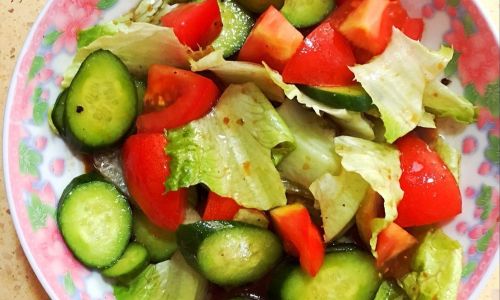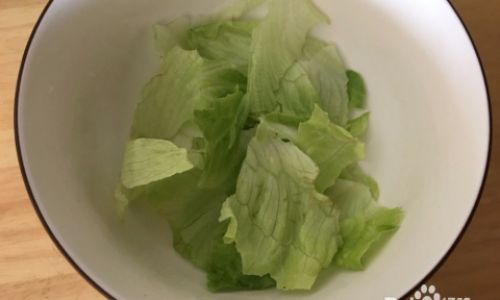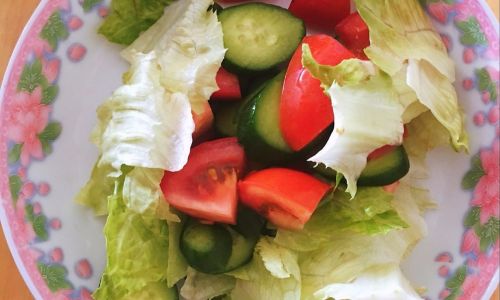Introduction
Salads are a refreshing and nutritious addition to any meal, and an oil and vinegar vegetable salad stands out as a simple yet flavorful option. This type of salad is perfect for those who appreciate the fresh taste of vegetables combined with a tangy, light dressing. Whether you’re looking to whip up a quick lunch, a healthy dinner side, or a vibrant appetizer, an oil and vinegar vegetable salad can fit the bill. In this guide, we’ll walk you through every step of making a delightful oil and vinegar vegetable salad, from selecting the right ingredients to perfecting your dressing. By the end, you’ll have a vibrant, delicious dish that’s as visually appealing as it is tasty.
Section 1: Choosing Your Vegetables
The foundation of any good salad is the quality and variety of vegetables you use. When making an oil and vinegar vegetable salad, you have a wide range of options to choose from. Here are some popular choices, along with tips on how to select and prepare them:
1 Leafy Greens

Leafy greens are the backbone of many salads, providing a base for other ingredients. Common options include:
- Spinach: Rich in iron and vitamins, spinach has a slightly sweet flavor and tender texture.
- Arugula: Known for its peppery taste, arugula adds a nice bite to your salad.
- Romaine: Crisp and refreshing, romaine lettuce is perfect for those who like a crunchy salad.
- Mixed Greens: A blend of different greens can offer a variety of textures and flavors.
When selecting leafy greens, look for vibrant color and fresh leaves without signs of wilting or yellowing. Store greens in an airtight container in the refrigerator, where they can last up to a week.
2 Cruciferous Vegetables
Cruciferous vegetables are not only nutritious but also add a nice crunch to your salad. Examples include:
- Broccoli: Break broccoli into small florets for easy eating.
- Cauliflower: Cut into bite-sized pieces, cauliflower adds a creamy texture.
- Brussels Sprouts: Shaved thinly or halved, Brussels sprouts can surprise you with their sweetness.
- Cabbage: Shredded green or red cabbage adds color and crunch.
Choose firm, compact cruciferous vegetables without soft spots or discoloration. These vegetables can be stored in the refrigerator for up to a week.
3 Root Vegetables
Root vegetables can add earthy flavors and different textures to your salad. Consider:
- Carrots: Shredded or sliced into thin rounds, carrots add sweetness and color.
- Radishes: Sliced thinly, radishes provide a sharp, crisp flavor.
- Beets: Roasted or pickled beets can add a sweet and tangy element.
Look for firm, smooth root vegetables without cracks or soft spots. Store them in a cool, dark place or the refrigerator.

4 Other Vegetables
There are many other vegetables you can incorporate into your salad:
- Cucumbers: Sliced thinly, cucumbers add a refreshing crunch.
- Bell Peppers: Diced or sliced, bell peppers come in a variety of colors and add sweetness.
- Tomatoes: Cherry or heirloom tomatoes can be halved or quartered.
- Avocado: Sliced or mashed, avocado adds creaminess.
- Zucchini and Summer Squash: Sliced thinly or grated, these vegetables are versatile and mild in flavor.
Choose fresh, firm vegetables with vibrant color. Store them properly to maintain freshness.
Section 2: Preparing Your Vegetables
Once you’ve selected your vegetables, it’s time to prepare them for the salad. Here are some tips and techniques to ensure your vegetables are perfectly ready:
1 Washing and Drying
- Leafy Greens: Rinse greens in cold water, then pat them dry with paper towels or spin them in a salad spinner.
- Cruciferous Vegetables: Rinse under cold water and pat dry. Trim any stems or tough outer leaves.
- Root Vegetables: Scrub carrots and radishes with a vegetable brush under cold water. Peel beets if necessary.
- Other Vegetables: Rinse cucumbers, bell peppers, and tomatoes under cold water. Peel zucchini and summer squash if desired.
2 Cutting Techniques
- Uniform Size: Cut vegetables into uniform pieces so they cook evenly (if applicable) and look appealing on the plate.
- Knife Skills: Use sharp knives for clean cuts and to prevent bruising the vegetables.
- Techniques: For example, use a mandoline or sharp knife to slice vegetables thinly, a cheese grater for zucchini, and a vegetable peeler to create ribbons of vegetables like carrots.
3 Cooking (If Necessary)

While many vegetables in a salad are eaten raw, some can be lightly cooked to enhance their flavor and texture:
- Roasting: Root vegetables like carrots and beets can be roasted until tender.
- Blanching: Cruciferous vegetables can be blanched briefly in boiling water and then plunged into ice water to stop the cooking process.
- Grilling: Bell peppers, zucchini, and onions can be grilled for a smoky flavor.
Section 3: Making the Oil and Vinegar Dressing
The dressing is what ties all the elements of your salad together. An oil and vinegar dressing is simple yet versatile, allowing you to adjust flavors to your liking. Here’s how to make a basic version:
1 Ingredients
- Olive Oil: A classic choice for its rich, fruity flavor. You can also use other oils like avocado, sunflower, or grapeseed oil.
- Vinegar: Options include balsamic, red wine, white wine, apple cider, or rice vinegar. Each type offers a different flavor profile.
- Mustard: A little mustard (Dijon or yellow) helps emulsify the dressing and adds a tangy flavor.
- Honey or Maple Syrup: A touch of sweetness can balance the acidity of the vinegar.
- Salt and Pepper: To taste.
- Optional Additions: Herbs like parsley, basil, or chives; garlic; lemon juice for brightness; or a pinch of red pepper flakes for heat.
2 Instructions
- Combine Ingredients: In a small bowl or jar, whisk together the olive oil, vinegar, mustard, and a small amount of honey or maple syrup.
- Season: Add salt and pepper to taste.
- Emulsify: If you’re using a jar, you can shake the ingredients together until well combined. Alternatively, whisk vigorously in a bowl until the dressing is smooth and emulsified.
- Taste and Adjust: Taste the dressing and adjust the flavors as needed. If it’s too tangy, add a bit more oil. If it’s too oily, add a splash more vinegar.
Section 4: Assembling Your Salad
Now that you have your vegetables prepared and your dressing made, it’s time to assemble your salad. Here’s how to do it:
1 Layering Ingredients

- Start with Greens: Place your chosen leafy greens in a large salad bowl.
- Add Cruciferous Vegetables: Scatter cruciferous vegetables like broccoli and cauliflower over the greens.
- Incorporate Root Vegetables: Add shredded carrots, sliced radishes, or roasted beets.
- Top with Other Vegetables: Add cucumber slices, diced bell peppers, cherry tomatoes, and avocado slices.
2 Dressing Application
- Drizzle and Toss: Drizzle the oil and vinegar dressing over the salad. Use just enough to lightly coat the vegetables—you can always add more later.
- Toss Gently: Use salad tongs or your hands to gently toss the salad, ensuring all the vegetables are evenly coated with dressing.
3 Garnishing (Optional)
- Fresh Herbs: Sprinkle fresh herbs like parsley, basil, or chives over the top for a burst of flavor and color.
- Cheese: Add a sprinkle of grated Parmesan, feta, or goat cheese for creaminess and tang.
- Nuts and Seeds: Top with chopped nuts or seeds like almonds, walnuts, sunflower seeds, or pumpkin seeds for added texture and protein.
- Citrus Zest: A light sprinkling of lemon or lime zest can brighten up the salad.
Section 5: Serving and Enjoying Your Salad
Your oil and vinegar vegetable salad is now ready to serve. Here are some tips for presenting and enjoying your creation:
1 Presentation
- Plating: Serve the salad on a large, clean plate or in a shallow bowl to showcase the vibrant colors and textures.
- Garnish: Add a final touch of fresh herbs, cheese, or nuts just before serving for the best presentation.
2 Pairing





0 comments